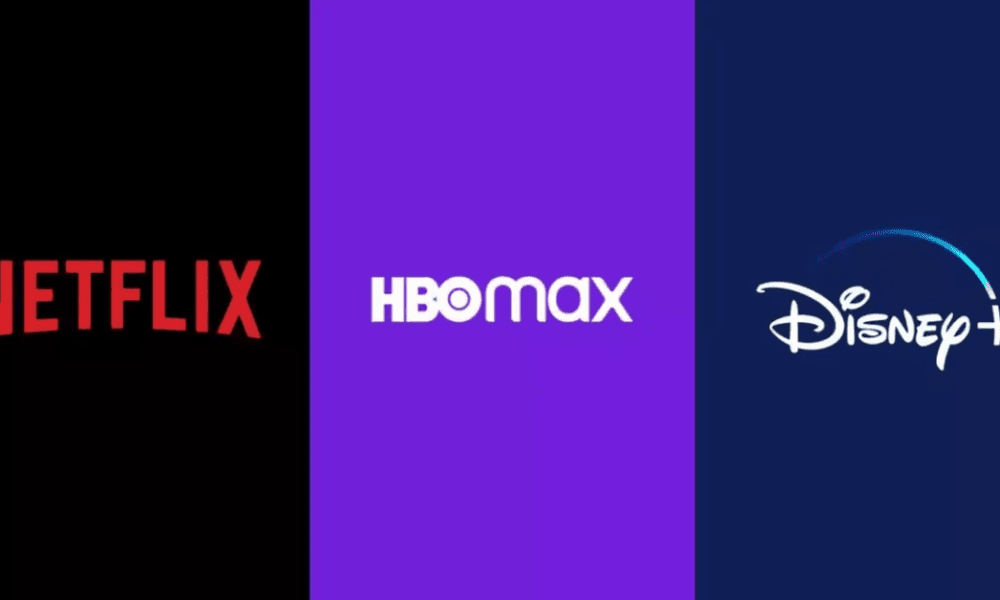Stream Wars Go Global: Disney+ and More Target New Markets
In recent years, the battle for streaming dominance has moved beyond the borders of the United States, with major players like Disney+, Netflix, Amazon Prime Video, and HBO Max targeting international markets. With billions of potential viewers across the globe, the “stream wars” have gone global, and streaming giants are customizing content to cater to local tastes, languages, and cultural nuances to capture new audiences. In this article, we’ll take a detailed look at how streaming platforms are expanding their reach, the strategies they’re using to localize content, and the impact of these efforts on the global entertainment industry.
The Global Expansion of Streaming Platforms
The shift towards international markets is a natural progression for streaming giants, given that the U.S. market has become saturated. To fuel growth and maintain subscriber numbers, platforms are focusing on countries with growing internet penetration and large populations, such as India, Brazil, Southeast Asia, and Africa.
Disney+ Expanding Its Reach
Disney+, which launched in November 2019, has quickly expanded into numerous international markets. With its well-known catalog of movies and TV shows, including Star Wars, Marvel, and Pixar titles, Disney+ has been successful in attracting global subscribers.
- Hotstar Integration: In India, Disney+ has integrated with Hotstar, one of the most popular streaming services in the country. Branded as Disney+ Hotstar, the platform offers a combination of Disney’s global content and popular Indian movies, TV shows, and live sports. This approach has enabled Disney+ to dominate the Indian market, which is one of the fastest-growing streaming markets in the world.
- Localization Strategies: Disney+ has also made efforts to localize content by offering dubbed versions of popular series in multiple languages, including Hindi, Tamil, Telugu, and Malayalam. Additionally, the platform has invested in original content produced in local languages to appeal to regional audiences.
Netflix’s Global Strategy
Netflix was one of the first streaming platforms to make a strong push into international markets, and it remains a leader in global content distribution. With subscribers in over 190 countries, Netflix has adopted an aggressive approach to local content production.
- Original Local Content: Netflix’s investment in original content produced in different countries has paid off. Shows like “Money Heist” (Spain), “Dark” (Germany), “Squid Game” (South Korea), and “Sacred Games” (India) have not only been successful in their home countries but have also gained immense popularity worldwide. By producing high-quality local content, Netflix has created a diverse catalog that appeals to viewers from different cultures.
- Subtitles and Dubbing: To cater to international audiences, Netflix offers subtitles and dubbing in multiple languages for its original content. This has made it possible for viewers to enjoy content from different countries without language being a barrier.
- Regional Partnerships: Netflix has also formed partnerships with local production companies to create content that resonates with regional audiences. For instance, in Africa, Netflix has collaborated with local filmmakers to produce original movies and series, helping to grow the local entertainment industry.
Amazon Prime Video: Targeting Diverse Markets
Amazon Prime Video has also expanded globally, with a focus on creating and distributing content that appeals to diverse markets. Amazon has tailored its offerings to cater to different regions and has invested heavily in original programming in languages such as Hindi, Portuguese, and Spanish.
- Local Originals: Amazon has launched original shows like “Mirzapur” and “The Family Man” in India, which have gained massive popularity. Additionally, Amazon has acquired streaming rights for local sports, including cricket in India and soccer in Brazil, further driving subscriber growth.
- Affordable Pricing: One of Amazon’s strategies to capture new markets is offering affordable subscription pricing. For example, in India, Amazon Prime’s subscription cost is significantly lower compared to Western markets, making it accessible to a larger audience.
- Localized User Experience: Amazon Prime Video offers a localized user experience, including language options for navigation, subtitles, and dubbing. This enhances the platform’s accessibility and makes it more appealing to non-English speaking viewers.
HBO Max: Expanding Through Partnerships
HBO Max has also begun its expansion into international markets, leveraging partnerships and content licensing to enter new territories. Unlike Netflix and Disney+, HBO Max has taken a more selective approach to its international expansion.
- Partnership with Local Providers: In Europe and Latin America, HBO Max has partnered with local cable providers to offer its streaming service as part of a package. This strategy allows HBO Max to reach a wider audience without having to build its own distribution network from scratch.
- Local Originals and Global Hits: HBO Max is producing local original content in markets like Latin America and Spain while continuing to distribute popular HBO originals like “Game of Thrones” and “Succession”. The platform’s blend of globally recognized content and locally produced series helps it appeal to both international and regional audiences.
Key Strategies for Conquering International Markets
1. Local Content Production
One of the key strategies that streaming platforms are using to conquer international markets is the production of local content. By investing in content that reflects local culture, language, and societal issues, streaming giants can create a deeper connection with viewers.
- Netflix’s Investment in South Korea: Netflix has invested over $500 million in South Korean content, resulting in global hits like “Squid Game” and “Hellbound.” These shows have not only been successful in South Korea but have also found massive audiences internationally, thanks to their unique storytelling and relatable themes.
- Amazon’s Focus on India: Amazon has also been producing Indian original series that cater to the country’s diverse audience. Shows like “Paatal Lok” and “Made in Heaven” have received critical acclaim and have helped Amazon establish itself as a major player in the Indian streaming market.
2. Language Customization: Subtitles and Dubbing
To make content accessible to a global audience, streaming platforms have invested in subtitles and dubbing in multiple languages. This allows viewers to watch shows and movies from other countries without language barriers.
- Netflix’s Multi-Language Support: Netflix offers subtitles and dubbing for nearly all its original content in numerous languages, including Spanish, French, German, and Japanese. This feature has been a significant factor in the success of non-English shows like “Money Heist” and “Lupin.”
- Disney+’s Dubbing Efforts: Disney+ also provides multiple language options for its movies and series, including local dialects in some countries. For instance, Disney+ Hotstar in India offers dubbing in several regional languages, making popular franchises accessible to a broader audience.
3. Affordable Subscription Plans
Pricing is a significant factor in attracting new subscribers, especially in emerging markets. Streaming platforms have adopted different pricing strategies to make their services affordable and accessible.
- Mobile-Only Plans: To target price-sensitive audiences, platforms like Netflix and Amazon Prime Video have introduced mobile-only subscription plans. For example, in India, Netflix offers a mobile-only plan at a lower price point, which has helped increase its subscriber base.
- Bundle Offers: In some regions, streaming platforms have partnered with telecom companies to offer bundled services. These bundles often include internet, mobile, and streaming subscriptions at a discounted rate, making it easier for consumers to access streaming services.
The Impact of Global Expansion on the Entertainment Industry
The global expansion of streaming platforms has had a significant impact on the entertainment industry. It has led to increased competition, more diverse content offerings, and a shift in how people consume entertainment.
- Increased Competition: The entry of streaming giants into international markets has intensified competition among local and global players. This has resulted in a content boom, with more high-quality productions being made to capture viewers’ attention.
- Cultural Exchange: Streaming platforms have facilitated a cultural exchange by making content from one country accessible to viewers worldwide. Shows like “Squid Game” and “Money Heist” have introduced global audiences to Korean and Spanish cultures, fostering greater cultural understanding.
- Challenges for Local Players: The entry of global streaming platforms has posed challenges for local streaming services and traditional TV networks, which now face competition from international giants with larger budgets and global reach. However, some local players have adapted by forming partnerships or focusing on niche content.
Conclusion
The global expansion of streaming platforms like Disney+, Netflix, Amazon Prime Video, and HBO Max has redefined the entertainment landscape. By localizing content, investing in regional productions, and adopting pricing strategies that cater to different markets, these platforms are capturing new audiences and transforming how people consume entertainment. The “stream wars” have indeed gone global, and the future will likely see even more customization and localization as streaming giants continue to expand their reach.
While there are challenges, such as intense competition and the need to navigate different cultural preferences, the opportunities for growth are immense. As streaming services continue to adapt to the diverse needs of international audiences, viewers around the world can expect more localized, high-quality content that resonates with their cultural experiences.




No Comment! Be the first one.